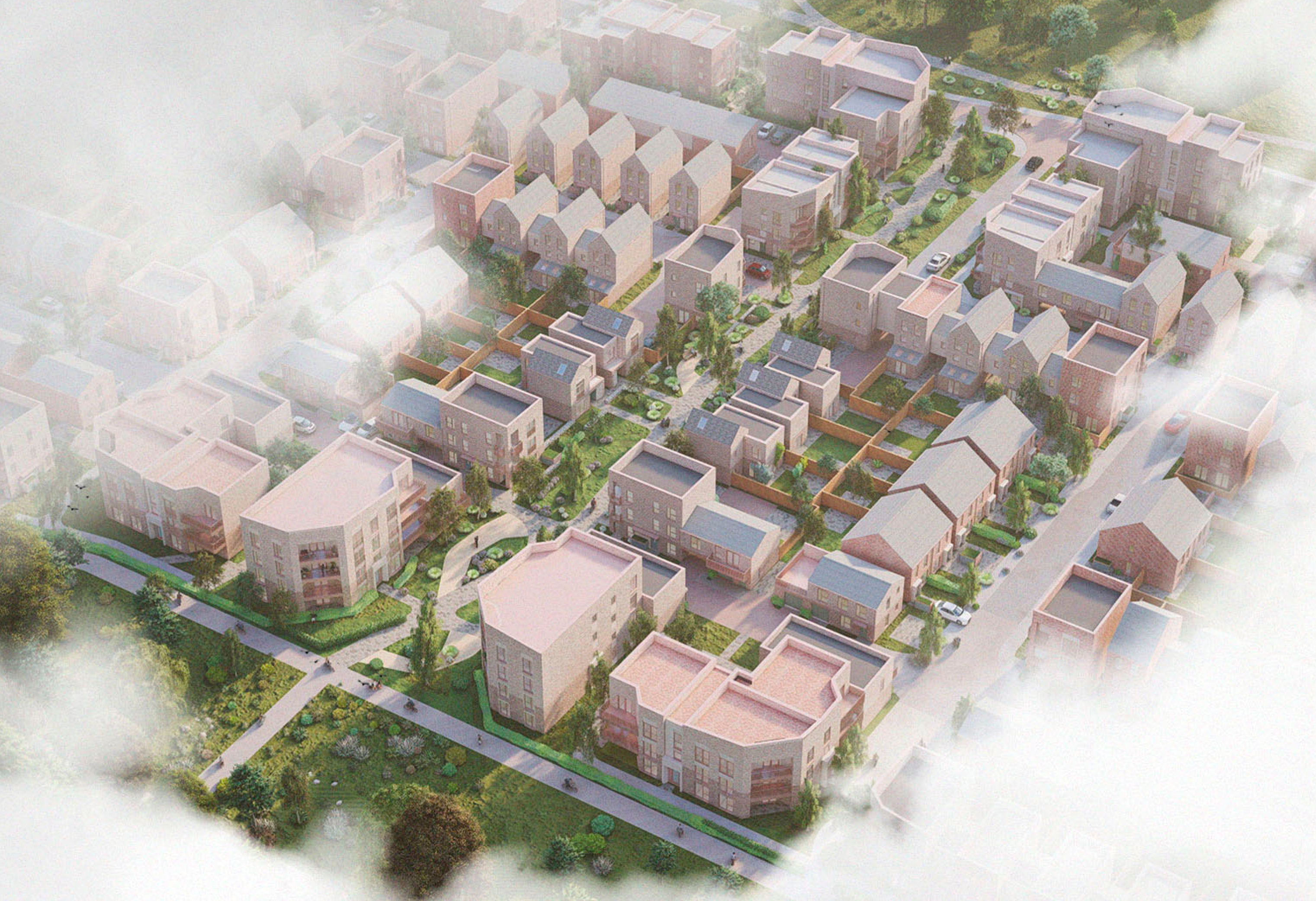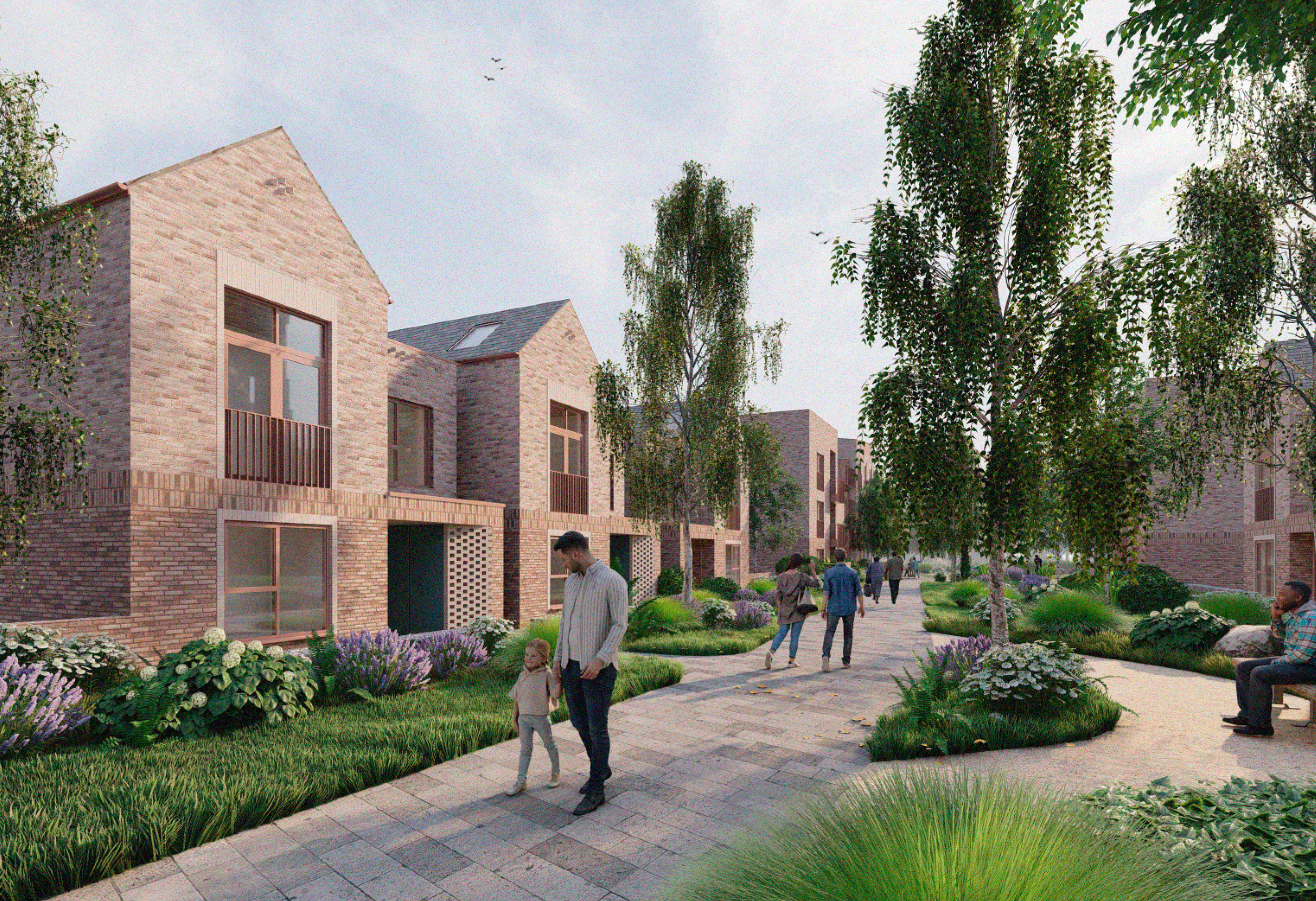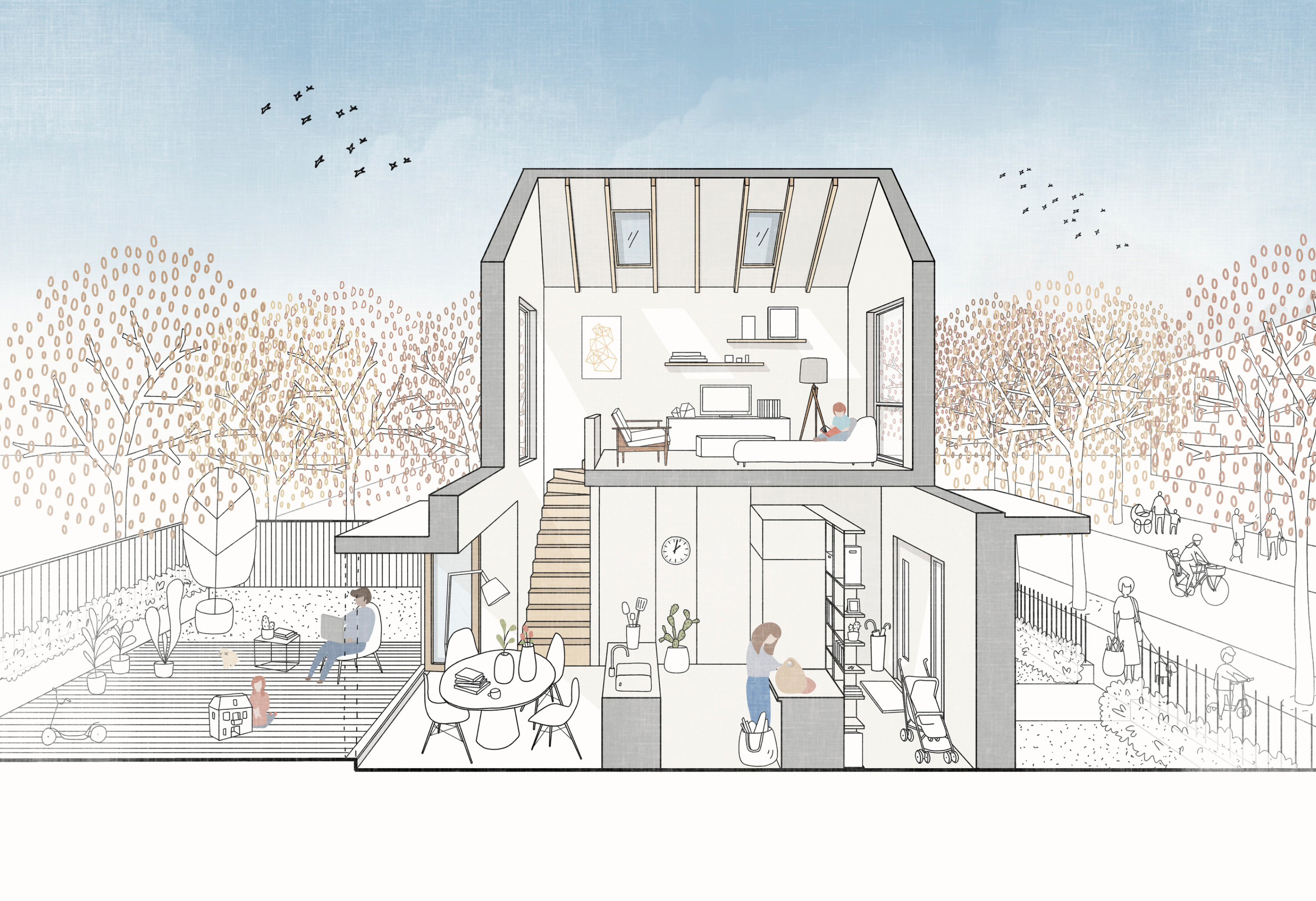Planning Permission Granted for Darwin Green Phase 4
HTA achieved planning for Darwin Green Phase 4, one of a six-phase suburban housing masterplan to the northwest of Cambridge City Centre. The scheme was developed throughout 2021-2022 through extensive workshops with the Cambridge City Council Urban Design and Planning teams to respond to feedback from a number of design review panels, accessibility panels and statutory consultees. The quality of the design is testimony to the collaboration of this design development process with Cambridge.
The Darwin Green neighbourhood of 363 homes is part of a wider cycle network with excellent connections as part of Cambridge’s established active travel culture. The proposals enhance the connections and green corridors established in the wider masterplan. The landscape is at the heart of the proposals, with a vehicle-free green link through the middle of the neighbourhood supported by rain gardens, street planting and pockets of open space to prioritise travel by foot and bike.
The blue and green infrastructure across the neighbourhood provides quality amenities for residents, varied species, and habitats to improve biodiversity, reduced hard landscaping to control overheating urban spaces, and slows down water runoff from hard surfaces to improve urban drainage systems and further contribute to habitat biodiversity.
Bicycle storage is a major consideration in the house design, with cycles in secure stores integrated at entrances and driveways for direct access from the street and often with direct access to vehicle-free routes and wider cycle networks.
Innovative house types activate dense mews streets with several flat-over garage types and short walk-up blocks with individual front doors and private stairs from ground level. These types, combined with four-storey apartment blocks in key frontages to the park along the Southern boundary and the green corridor along the northern boundary, provide 342 homes at a density of 73 dwellings per hectare.
The proposals feature a bespoke house type developed by HTA as the winning entry for the Architects Journal / Barratt - ‘HOME OF THE FUTURE’ competition. The innovative house type provides an aspirational home that addresses our changing living patterns and the challenge of climate change. The layout is designed with flexibility, allowing people to stay within their home and adapt it over their lives rather than move. A highly efficient fabric combined with massive cross and stack ventilation opportunities allows the house to stay cool even in peak predicted future temperatures. The daylight levels in the living room are greater than 10%.
A network of open spaces centred on the green link provides amenity space for residents, vehicular separation and increased ecological value in the neighbourhood. In addition, the evaporative cooling nature of soft landscaping contributes to the cooling of hard-landscaped urban spaces. Reduced hard landscaping throughout the site will also reduce the carbon impact of the site materials. This is particularly marked in mews streets to the rear of apartment blocks where parking has been integrated beneath the built footprint to reduce surface parking and increase soft landscape.
Proposed window details address key concerns around daylight/sunlight levels and strategies to reduce overheating. Key south/south-west facing windows have brise soleil shading devices and pergola structures integrated with balconies to reduce solar gains in the hottest summer months. All apartments are dual aspects, benefitting from the capacity for through ventilation.














